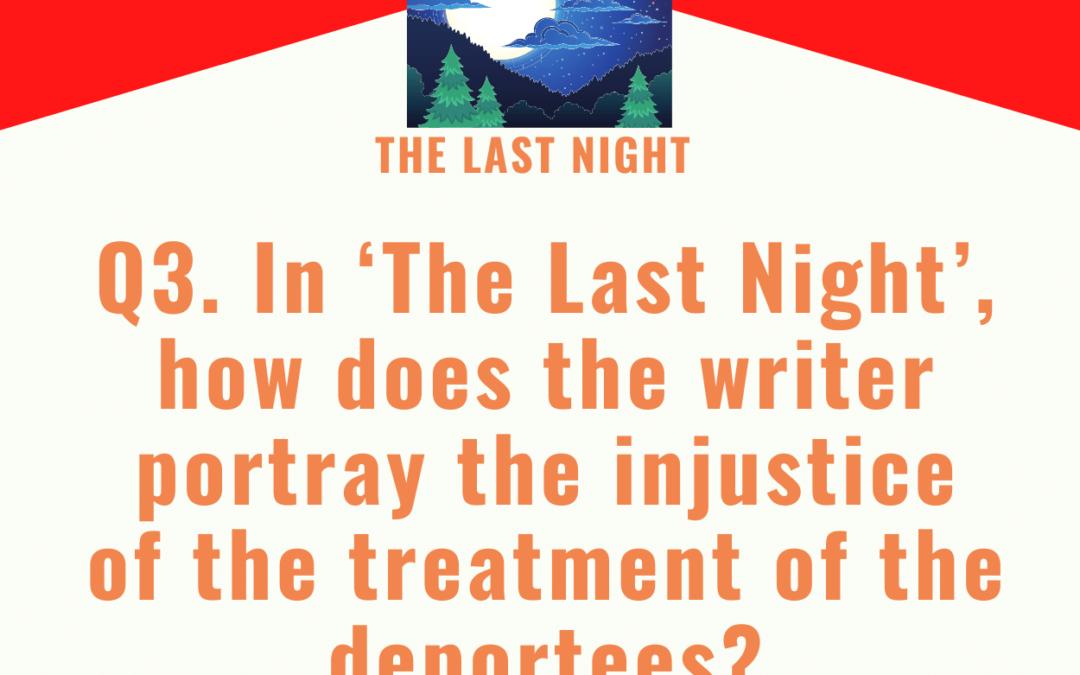Edexcel English IGCSE: The Last Night by Charlotte Gray
Q3. In ‘The Last Night’, how does the writer portray the injustice of the treatment of the deportees?
In your answer, write about:
- the conditions that the deportees are kept in;
- the actions of other people;
- Andre’s actions and thoughts;
- the use of language.
Refer closely to the text in your answer. You may use brief quotations.
Edexcel English IGCSE Model Essay by an Expert
‘The Last Night’ describes one scene in the context of the Holocaust; this was a period of terrible injustice against many groups of people. The experiences of the deportees in this passage portray the human story of this terrible event.
The humanity of the deportees is undermined by their conditions. They sit on “filthy straw”, like animals in captivity. Andre’s face is lying “uncaring, in the dung”. The fact that he does not even notice that he is lying in faeces is also animalistic; he has become accustomed to disgusting conditions. Later in the passage, they are described as being in an “enclosure”, a word which is typically used to describe animal cages. This again shows the dehumanising treatment of the deportees. The injustice of the situation is highlighted by the comparison with the camp officials. The camp commandant, for example, is sitting “at a long table”. This extravagant furniture contrasts with the rudimentary conditions of the deportees, and clearly shows the commandant’s status and power over them.
The descriptions of the child deportees show the ultimate injustice of this situation, since they are clearly undeserving of their treatment. Faulks’s tender reference to the “soft bloom” of Andre’s cheek evokes a classical image of childhood innocence and youth. This image is framed by animalistic descriptions of their conditions, showing the cruelty of the deportees’ treatment. The innocence of the children is also undermined by their increasing awareness of their predicament. At first, Andre is confused by the “terrible ferocity” with which a mother regards her child; then he realises that she wanted to remember him “for ever”. This terrible realisation that the mother will never see her child again seems too mature for a child who should be enjoying youthful ignorance of the world’s horrors.
The unjust treatment of the deportees is also portrayed through the actions of others. Some people offer acts of kindness to them, for example bringing a pail of water. However, the fact that this fulfilment of a basic human right is portrayed as kindness – a boy embraces the woman in gratitude – shows that their most basic needs are not being met. The children also “clustered” around the bucket, reflecting their desperation for water. The operation is portrayed as organised and clinical, as though the people are merely cargo. For example, a policeman calls out names in “alphabetical order” to board numbered buses. This constitutes complete neglect of the emotional impact and human injustice of the situation.
The injustice of the deportation is finally captured in the image of a tiny baby being lifted onto the bus to be taken to the concentration camp. As an embodiment of innocence, the baby symbolises the cruelty and senselessness of the mass extermination of entire groups of people.



